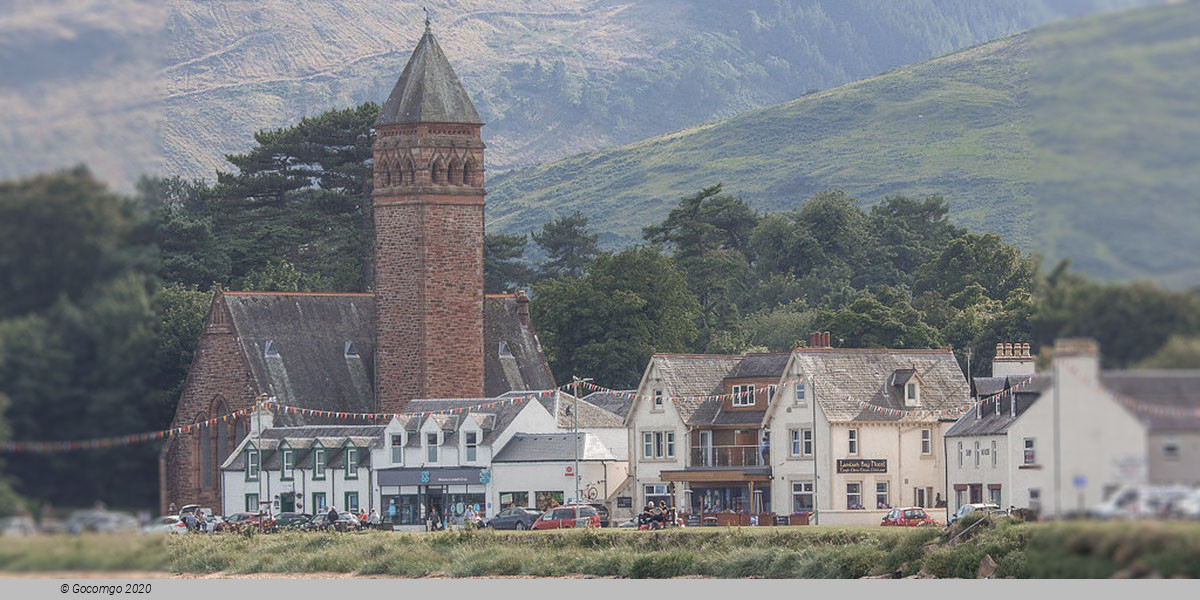Lamlash

Lamlash is a village on the Isle of Arran, in the Firth of Clyde, Scotland. It lies 3 miles (5 km) to the south of ferry port Brodick, in a sheltered bay on the island's east coast, facing the Holy Island. Lamlash is the seat of Arran's local government offices and is also the location of the island's only police station (rarely manned), secondary school, and hospital. In common with the rest of the island, the village's main industry is tourism and the public sector is also an important employer. Lamlash has an RNLI Lifeboat station with a B class Atlantic 75 lifeboat, covering the inshore waters around the coast of Arran, and in summer, there is a regular ferry service from Lamlash harbor to Holy Island.
History
A prehistoric ring of stones indicates that an ancient settlement has existed near Lamlash since antiquity. The name Lamlash dates back to the 6th Century hermitage of Saint Molaise a Celtic monk born in Ireland but raised in Scotland, who in c.590 spent some time in a cave on the neighboring Holy Island. Commonly known as MoLaise the Gaelic name of Holy Island was, as a result, Eilean MoLaise. This gradually evolved through Elmolaise and Lemolash to Lamlash, which is what Holy Island was called until early in the 19th century. After that time the name was more normally attached to the village that grew up facing it. Lamlash was peripherally involved in the 13th century Battle of Largs. It was the birthplace of artist James Kay.
When Mary, Queen of Scots was at Dumbarton Castle in February 1548 during the war of the Rough Wooing, the English commander Grey of Wilton proposed basing some warships at "Lammelashe" to watch for French ships.
The village was the training place for No. 11 (Scottish) Commando during the early years of the Second World War.

